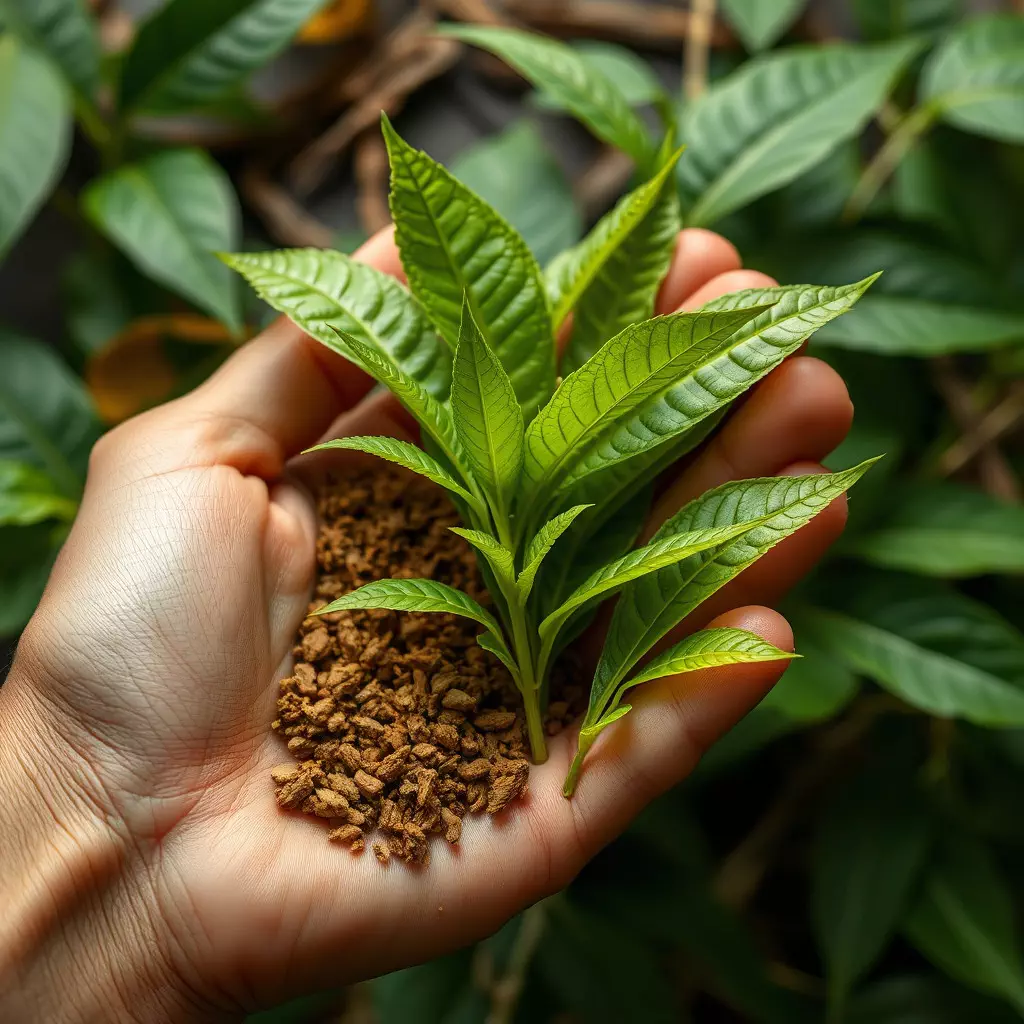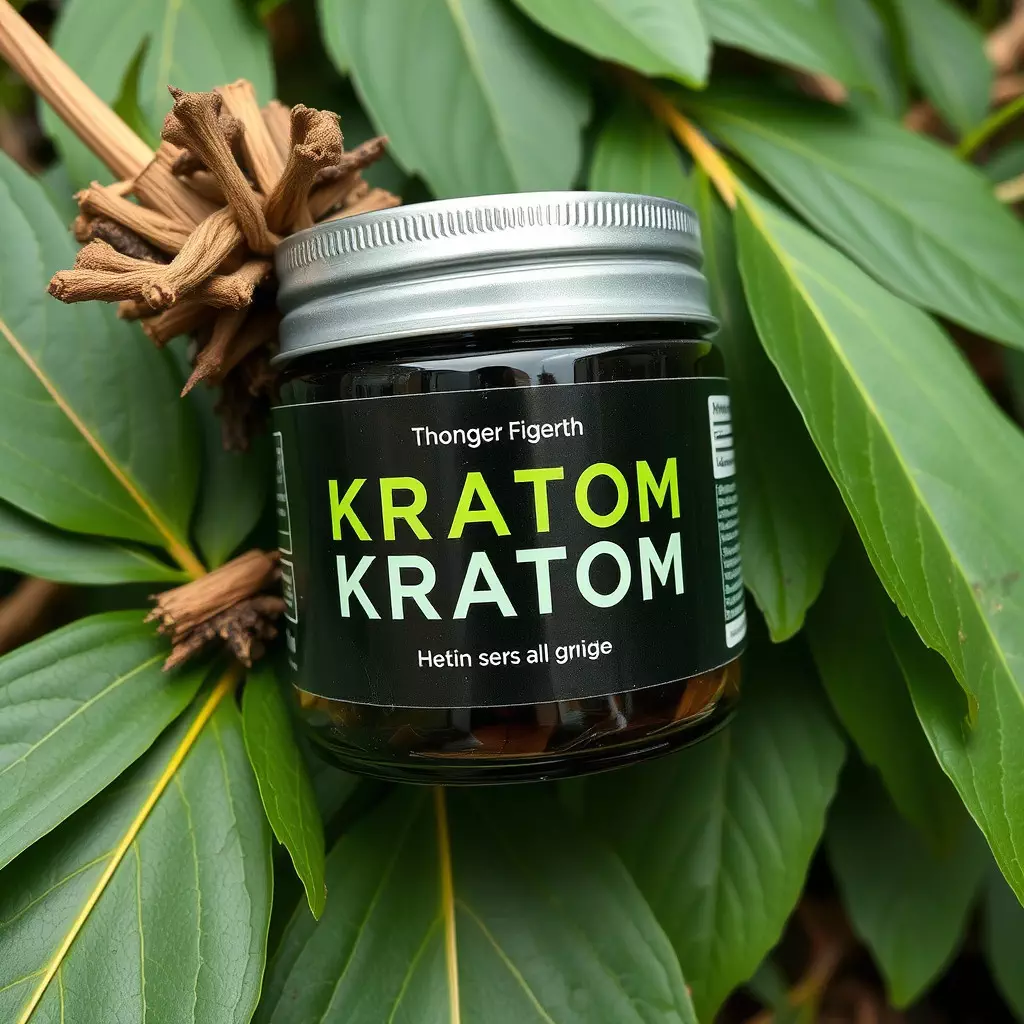The blue lotus flower and kratom, a Southeast Asian herbal supplement, have gained recognition for their potential to provide relaxation and stress relief. Historically revered by ancient civilizations, the blue lotus is now consumed as tea or tinctures, offering tranquil effects without the need for smoking. Kratom's alkaloids, like mitragynine and 7-hydroxymitragynine, engage with neural receptors and have been associated with mood enhancement and stress relief. User experiences suggest that combining these two natural substances may offer a synergistic effect that improves well-being by promoting relaxation and elevating mood. However, it's crucial to approach their use responsibly, considering legal restrictions, side effects, and the importance of integrating these substances into a comprehensive health regimen that includes balanced nutrition, exercise, and professional mental health guidance. A holistic strategy ensures a safe and effective method for stress management, emphasizing personalized usage under expert supervision, especially when using kratom. Consulting healthcare providers or herbalists is recommended for anyone interested in incorporating these botanicals into their wellness routine to maximize benefits and minimize risks.
Embark on a journey through time as we explore the natural pathways to tranquility, examining the ancient Blue Lotus Flower’s role in relaxation and its intriguing link to kratom. This article delves into the science behind kratom’s stress-relieving and anxiety-mitigating properties, offering guidance on how to harness its benefits safely. Learn the critical dosage considerations for achieving therapeutic effects without falling prey to misuse or adverse reactions. Unravel the secrets of these natural compounds and discover how they can become your allies in the quest for inner peace and well-being.
- Exploring the Blue Lotus Flower: An Ancient Approach to Relaxation and its Connection to Kratom
- Understanding Kratom's Role in Stress Reduction and Anxiety Management
- Safe Kratom Use and the Importance of Dosage for Therapeutic Effects
Exploring the Blue Lotus Flower: An Ancient Approach to Relaxation and its Connection to Kratom

The blue lotus flower, historically revered in ancient Egyptian and Greek civilizations for its calming properties, has long been associated with relaxation and tranquility. Often depicted in art and literature as a symbol of serenity, the blue lotus’s sedative effects have been sought after for millennia. Today, the interest in this mystical plant is resurfacing, with many exploring its potential benefits for stress relief. While the blue lotus flower itself is not meant for smoking, its alkaloids can be extracted and used in various forms, including teas or tinctures, to induce a state of deep relaxation.
In the realm of contemporary herbal supplements, kratom, a tropical tree native to Southeast Asia, has gained popularity for its mood-enhancing and stress-reducing effects. Similar to the blue lotus, kratom contains alkaloids that interact with the body’s neural receptors, potentially offering anxiolytic and euphoric properties. The synergy between these two natural substances has intrigued researchers and users alike, as both are believed to modulate stress responses. While further research is necessary to fully understand their interplay, many individuals report a harmonious combination of the blue lotus’s relaxation effects with kratom’s mood-elevating qualities, leading to a more balanced and peaceful state of mind.
Understanding Kratom's Role in Stress Reduction and Anxiety Management

Kratom, a plant native to Southeast Asia, has gained attention for its potential role in stress reduction and anxiety management. The alkaloids present in kratom leaves, particularly mitragynine and 7-hydroxymitragynine, are believed to interact with the body’s opioid receptors, leading to a range of effects that can be beneficial for individuals dealing with stress and anxiety. While research is ongoing to fully understand its mechanisms, anecdotal evidence and some scientific studies suggest that kratom may help modulate mood and alleviate feelings of anxiety. For those exploring natural alternatives to manage stress, kratom strains like Maeng Da or Bali are often sought after for their calming properties. It’s important to approach the use of kratom with caution and to consult with healthcare professionals, especially considering the varying legality and potential side effects across different regions.
Incorporating kratom into a stress management routine should be done thoughtfully and in conjunction with other healthy practices. The blue lotus flower for smoke, often associated with relaxation and introspection, complements kratom’s effects by providing a tranquil and meditative experience. This holistic approach can enhance the overall effectiveness of stress relief efforts, promoting a sense of well-being and inner peace. It’s crucial to understand that while kratom may offer support in managing stress and anxiety, it is not a cure and should be one part of a comprehensive wellness strategy that includes proper diet, exercise, and mental health care.
Safe Kratom Use and the Importance of Dosage for Therapeutic Effects

Kratom, a plant native to Southeast Asia, has garnered attention in natural wellness circles for its potential to alleviate stress and anxiety. When considering kratom for therapeutic purposes, safe use is paramount. One of the key factors in achieving beneficial effects from kratom lies in the dosage. Proper dosing can differentiate between a supportive experience and one that may lead to adverse effects. It’s crucial to approach kratom with a clear understanding that individual sensitivities vary greatly. Therefore, starting with a lower dose and gradually increasing it under guidance is recommended. This cautious approach allows for a tailored experience, optimizing the therapeutic potential of kratom without overstepping into potentially hazardous territory.
For those intrigued by botanical remedies such as the blue lotus flower, which has historical associations with smoke and ceremonial use, it’s important to recognize that each substance can affect individuals differently. The blue lotus, while different from kratom, shares a common interest in natural relaxation and stress relief. When integrating kratom into one’s wellness routine, paralleling the careful practice of using botanicals like the blue lotus, one should adhere to responsible dosing practices. Consulting with a healthcare provider or a knowledgeable herbalist can provide personalized guidance to safely navigate kratom’s effects and ensure that its use aligns with one’s wellness goals. This step-by-step approach to safe kratom use is essential for harnessing its benefits for stress and anxiety relief.
In conclusion, the exploration of traditional methods like the blue lotus flower for smoke, as discussed in relation to kratom, offers a compelling pathway towards managing stress and anxiety. The article has delved into the historical significance of the blue lotus and its parallels with kratom’s therapeutic potential, underscoring the importance of understanding kratom’s role in relaxation and anxiety management. It is clear that safe kratom use, informed by appropriate dosage guidelines, is crucial for harnessing its beneficial effects without compromising health. As such, individuals seeking natural alternatives to alleviate stress and anxiety may find guidance in the wisdom of ancient practices and the scientific understanding of kratom’s properties, blending tradition with modern knowledge for a holistic approach to well-being.






